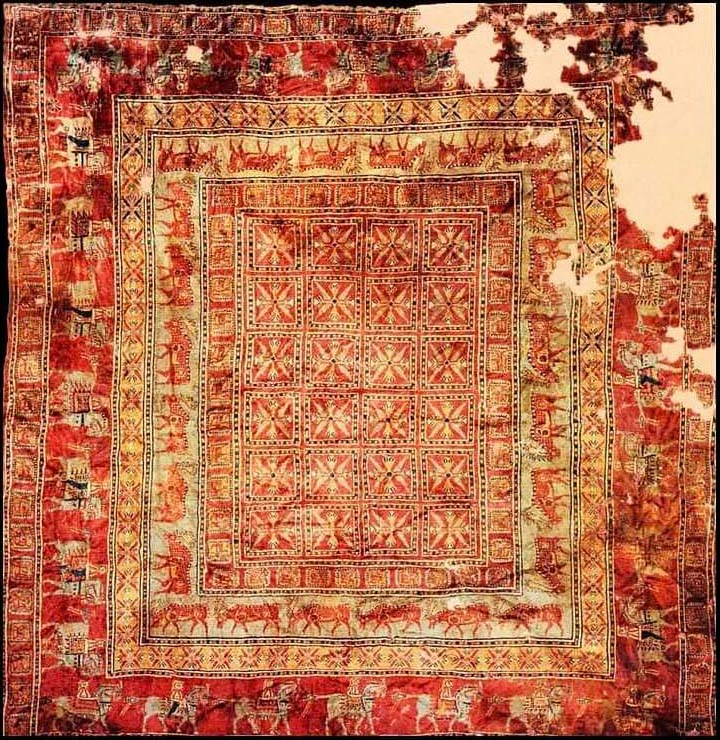Pazyryk carpet, which is considered the world’s most antique carpet, was found and unearthed by Prof. Rudenko- a former Russian archaeologist- in the Altai Mountains of Syberia in 1949. Due to the permanent frozen condition of the soil in which it was unearthed, the carpet has been notably survived and for the time being, it is believed to be the only specimen left from the Achaemenian period.
Despite the fact that Pazyryk carpet was found in a Scythian burial site, the strong resemblance of the ‘s Carpet’s design to Perspolis architecture has persuaded the experts to attribute its origin to Persia. The field of the carpet bears an all-over pattern of cartouches overshadowed by borders regarding their size and pattern. Each cartouche contains four lotus blossoms sprung in four directions; meanwhile, cleverly drawn leaves are interspersed among the flowers to take care of empty spaces
A row of twenty-eight horse riders, heading toward a specific direction alongside the border, has created the wider border. Furthermore, the fourth subsidiary border includes a row of twenty-four elks moving in the opposite direction of the horses. The third border imitates the same wealth of decoration, which occurs in the field and finally the first and the last borders carry the figures of griffins that seem to be guarding
The harmonious balance of the carpet’s colouring, which is tunefully combined with light red, green and a special blue, known as Pazyryk blue, has given thecarpet an outstanding glory

Related Description
Origin: Iran, 5th century B.C
Collection: Hermitage Museum, St. Petersburg
Design: Pazyryk
Knot type: Symmetric
Dimensions: 200 x 183 cm
Raj: Approx. 40
Knots per 10 cm (width): 60
Knots per 10 cm (length): 60




